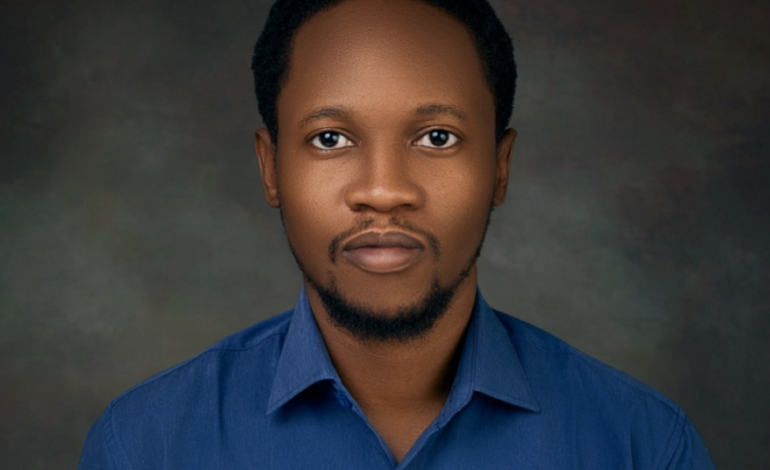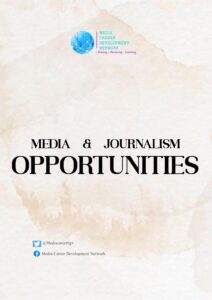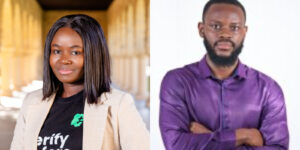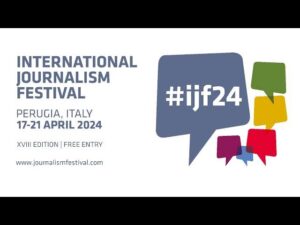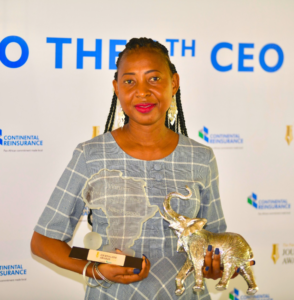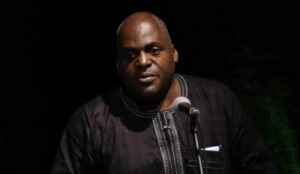Mansir Muhammed, a GIS/OSINT specialist at HumAngle was named among the winners of the 2024 Sigma Awards celebrating excellent data journalism projects globally for his report published alongside an extensive investigation by HumAngle in collaboration with New Lines Magazine.
In this interview with our correspondent, Noah Aderoju, Muhammed spoke about his work as a technologist/journalist in a newsroom pioneering innovative ways of telling human-angle stories, especially about victims of conflicts and insecurity, and making sure to use technology to enhance storytelling and delivery even to people with accessibility challenges.
He also emphasised the need for journalists and media houses in Nigeria to collaborate more and invest in technology in their news production workflow and in newsrooms.
Looking at your work, how would you describe yourself, the journalist or technologist which one are you more inclined to call yourself?
That’s kind of a tough question. Well, if you work in a media house, if you work with a newsroom, you are essentially a journalist. But particularly, I would say that with the way I do my own part of news reporting, it’s closer to data journalism. I am still involved with other technological parts. I’m still a member of our technology team at HumAngle, and I also work with the newsroom, so I’m just in between there.
You said it’s closer to data journalism. That means there’s more of yourself in other parts of the workflow than even in journalism. Can you describe your journey into journalism, how did you start? And so far, how has it been?
Oh, okay, well, I joined the HumAngle team in 2020. The company was still brand new then. I joined as a GIS specialist. My role was to document and visualize the cases of COVID-19 at the early stage of COVID-19, so we maintained a dashboard almost throughout the crisis. The COVID-19 pandemic. So because it was a project, after the project was concluded, then I joined the IT team.
So I did mostly data collection and also my own geographic research. And then from that part, I think I started attending the newsroom and editorial meetings because when I saw the nexus between what I did with GIS information and they wanted me to work better with the journalists, I had to join the editorial meetings and get to understand what journalists do and I hosted a few trainings so that they understand what I do too so that we could function properly together. So they could know what to ask of me, and I would know what to ask of them, and I would know the way I should do it in line with publication for media consumers. Well, so I think that’s where we landed.
So I’ve been there, and I picked up the role of the open source specialist because it was closer to my training at the university. So that’s the transition and journey so far.
So before joining, you weren’t in the journalism space. In fact, when you first joined HumAngle, there was this sort of demarcation between the IT part of you and the journalist work?
Yeah, because I was mostly focused on academia then. I was going for my advanced degrees then. I didn’t have any, let me say, background in journalism or even ambition to join, actually, it was when the boss, Mr Ahmed Salkida, invited me over and said I should come for a talk. And so he had the idea because this whole integrating GIS into the newsroom was his idea. And so he had the idea, and he said, okay, I should come and we should talk about it. So I met him and the co-founder then and we talked about using the technology for reports.
For the benefit of those who don’t know, what is GIS and OSINT? As a GIS and OSINT specialist, what is the length and breadth of your typical work?
Okay, GIS/OSINT specialist. So GIS also geographic information system, then OSINT, open source investigation. So essentially, just for the GIS part, because we in the field, apart from media, in media, we call it GIS/OSINT but in academia, in some industries, it’s GEOSINT that is geographic intelligence.
So basically, it’s just a technique. It’s a skill that we use to gather information about places and things and how it affects people. And so we try to make sense of things that happen in any place. So it’s basically using the field of geography in the physical world and trying to make meaning of things. And so when you combine it with the open source investigation, which is not new to journalism, journalists do open source every day, there is a dimension that opens, which is beyond just fact checking things.
It’s more like you open a dimension of in depth investigations in process. You use the elements of both technologies to gather different kinds of information from different and various sources of publicly available information and try to synthesize it into meaningful ideas and meaningful conclusions.
Putting it together with this technology to understand places and the way things happen in places and how it affects places, and using all those intelligence combining together. So that’s where the field focuses. That’s how the field is grounded, and that is essentially what I do at HumAngle.
So, on a typical day, what tools do you use most? Like as a GIS/OSINT specialist what tools do you use most, on a daily basis, and how do you use them for your work?
Yeah, so it usually depends on the work, the nature of the assignments, but, well, the GIS part is, even before I joined the team, I made map-making tools like ArcGIS. That’s Arc GIS and Q GIS. That is Q and GIS. And we have Google Earth which is one of my favorites. And then we have Google Earth Engine, which is for advanced professionals like me. We get to use the capabilities of Google Earth itself with advanced GIS software like the ArcGIS I mentioned earlier. So you get to combine these capabilities to like what I told you about, adding the location components to the investigative, open source investigative components together. So tools like Google Earth Engine and ArcGIS help us do that.
These are some of the tools I mostly use and well, for the investigation, I use a lot of Google Dorking techniques, that is just using the Google search parameters and tools to check, and filter information out. I still use tools that journalists use, the word cloud and all those things to gather new sources and synthesize it to drive my project.
It’s been a minute of exploring the new parts of journalism that I have less knowledge about and It’s been exciting.
So now let’s quickly touch on your recent award. Your report on HumAngle in collaboration with the New Lines Magazine was recently selected among the ten winners of the Sigma Awards, a global data journalism projects award.
How do you feel about this and what is your most significant takeaway from the journey of conceiving the project idea, working on it, publishing it and winning the award?
Well, it’s been exciting. Going in, I wouldn’t say I was expecting to win an award for it, but, yeah, it was nice to win the award and, well, I feel honoured. I also feel that the projects we worked on, the mass grave project is a very powerful project, a very big project. We traveled and went to a lot of sites and we had to gather fixers, we had to meet people that would talk to us and so it was a very big project. And somehow when the award came, it’s like, yeah, I mean, it’s an honour, but it makes sense that it came in.
We put a lot of work into it and there were a lot of difficult moments, where we had to find tools and technology. I had to go back to my drawing board, go to my notebooks and check and read research papers, check for approaches, things that I was already familiar with. I mean, things I knew how to do already, but I had to take it towards another dimension, take it bigger. And so it took a lot of effort, a lot of energy to achieve. It was a very powerful project. Before the project, I was working on a very long investigation about abandoned communities. So it was a big project and I thought it was going to be the biggest project I worked on last year.
It’s a big project because we spent months looking for hundreds of villages that have been abandoned and I thought that was it, but then, a few days after filing that report that’s when Kunle Adebajo went to the field and we’re communicating throughout and there was so many pictures, so many back and forth just to get everything we wanted. And so it’s been exciting winning the award. I’ve been so honoured.
Hearing this explanation from you makes the award feel even more rewarding. As we are very happy to have something like this come down to Nigeria we are also proud of people like you that make works like this happen.
One important thing about that work is that as much as it is a brilliant work, it’s a product of collaboration of more than one journalist and even two newsrooms.
What can you say about collaborative work in journalism?
Collaborative work in journalism is nice. I think it brings out the most powerful reports. One of my favourite stories and one that motivated my interest in journalism, I always say is the BBC investigation “Anatomy of a Killing. Yeah. So I like the way it is done because if you look at it, there was so much collaboration. There are some things that a journalist himself can’t do or a single media house can’t do alone. And you have to have skillful people. You have to have people with different skills. You have to have journalists, data collectors, and different kinds of investigators. You have to have the open source investigators. And when multiple newsrooms collaborate like this, there are chances that there are more resources and more personnel that can chip in and make a project very strong. So collaborative work in journalism, especially for the big projects where you are trying not to leave some part of it.
There are times when journalists are not skilled in certain fields to acquire some information and that information is not readily available online or in other sources. You have to now go through the process of getting the primary data, getting the primary analysis, and in some big projects now, when you don’t have that diversity in teams, what happens is that you leave that part blank. Even as much as you want to include it in your work, you have no choice but to leave it. And so even if you have a strong project, it could have been stronger. And so when you have teams like this working together, you have the chance. You have increased your chance of getting the most powerful reports. I’m all for it. I’m all for teams and collaborative journalism.
Truly, if one individual can create a powerful work when more than one collaborates, it can be better, it can be more powerful. That’s really what collaboration in journalism can bring out.
Our journalism in Nigeria has continued to evolve, with people experimenting with more ways to tell stories, using documentaries, infographics, data journalism, solutions journalism and experimenting with social media storytelling and many other things like that. So, comparing the works that we have produced here in Nigeria to what is obtainable in other climes in terms of quality and presentation, how would you grade Nigeria media? And what’s your rationale behind this grading?
Okay, that is a big one you are asking me to do. I mean, I’ve been in the newsroom for like, I think four years now, I don’t know if I can do that.
You can judge from your personal view, from your own purview as somebody who works in the technical part of journalism.
Actually, in Nigeria, we’re doing a lot. I don’t know if I’m being biased right now, but I feel like, if I’m starting with HumAngle, our idea of journalism now, it’s the global standard. We’re not just doing reports, and I think a lot of newsrooms are also doing that.. But for us that is our primary focus, not just local reporting, it should be global standard. From our style, our editorial style, to design, to even just the kind of stories we pursue.
And, I think in Nigeria we’re doing well. We have yearly contributions to international awards. Even right now we have the longlist for the one World Media award.
And I have a feeling that there are going to be a lot more like this as it is still the award season. So there are going to be a lot more awards from Nigeria coming on. And the kind of stories we tell, we tell stories with investigations, deep investigation. I mean, you can see what FIJ did (with the smuggling investigation). That’s a serious investigation.
So if I’m commenting on works like that and I guess that is a big work, I mean that is kind of global standard work. We should do deep investigative journalism. I am not commenting on content, just commenting on the approach. And you see CJID too, they are doing good work too. I mean, in fact, the essence of that branch of Premium Times is to have a standard, a very technological-driven standard media. I think we’re doing good here, we are trying. I mean there’s room for more technology, there’s room for more improvement, of course, but we are on the right track. And we have pioneers, we have young newsrooms now trying to push the narrative of technological-driven, global standard journalism. We have them. So take one direction.
Taking the line of improving on technology-driven projects and things like that, what advice would you give to journalists and media houses incorporating technology in their storytelling, news production and presentation of information?
I mean one of the biggest problems I have here in Nigeria, especially for my job, is access to data, access to some information. Here in Nigeria, there are so many information that you can’t get online, even on agencies and official websites of people that are supposed to have it. So it is easy to get discouraged with that, but if you always have an open mind, always asking what else can I do? Where can I get information? What do I need? if It’s not available how can I make it available? Do I need to hire a professional?
If you are going on reporting, maybe you are reporting on sooth in Portharcourt, for instance. And you are there. You’ve gotten voices from people, but you want more. And, there is no concrete data on the environment and on the environmental impacts, something you can work with, relevant information to your narrative there online. Maybe it’s not online. Maybe it’s not on any environmental agency in the state or national level. You can hire a team. Go with a team, get air quality. You know, invest in technology if you have to pay for some data, you try, if it’s important enough. And there are a lot of outlets that offer media programs, the non-profit program. So we have to always try, before you give up, before you say we don’t have it, at least look for it.
Also, If there are some things you can logically find online, find them. If you want to find maybe the exact time and date of an incident, you can find that online. If you are trying to narrow down some information, maybe what someone tells you and you’re trying to put the pieces together. I can remember a story where we interviewed someone, she couldn’t remember where the incident happened, but she just told us things like when she left, like full moon positions, the path she followed. So, you know, you can go online and check for the lunar calendar. You can check the weather. There are weather services. You can check things to corroborate your stories, to guide your narrative. Those are technology. It won’t be laid out online. It won’t always be laid out for you. You can always find the pieces and put them together and inform your story. So let’s not be afraid of technology. Let’s just always try to see if we can find an alternative.
How much do you think the Nigerian media invests in technology or hiring technologists in the industry? Like, how many of yourself do you see in other newsrooms?
I can’t say I know much about that. I mean, part of the challenge I have with HumAngle is, because of what we are doing, we’re trying to pioneer things, a lot of the times when I try to look for contemporaries, I don’t see a lot of them. And so a lot of the time, most of the work I have to do that myself thought I had to take a lot of time because of that. And so a lot of the time we have to pioneer some things, like dashboard GIS narrative in the newsroom.
Well, I know that. I know for sure that there are other newsrooms out there with approaches to integrating technology and expert perspectives to their newsrooms. I can see but I don’t know the arrangement. So I only know how we do things with HumAngle.
So do you think if there have been more of people like you, collaboration would have been easier in Nigeria? Because I saw that you do more collaborations with newsrooms outside the country, say New Lines Magazines.
Yes, actually, I mean we do. We have a lot of collaboration with international media houses because, you know, like I think since I came to HumAngle we’ve had publications with international media houses, collaboration on big investigations. So I think why they keep coming to us is that we have teams, we have specialized professionals that make it work. Apart from working on it, it makes the organization see the possibilities. They see the prospects of what can happen. There’s so much gap that I get to bridge and other specialists in my company also get to bridge. And so if we have more of that in Nigerian media houses it is good. I think we even did something with CJID, we published a report recently. A fire story that was a collaboration with Kunle. I did some GIS work there, where I found some communities that have been allegedly destroyed by the military, by fire burning. I used NASA fire technology and used satellite imagery. That’s a local collaboration we did. It’s like the standards that we use for international collaboration. That is what we did. We published the report recently. It’s like a few thousand words long, very lengthy and it has so much quality. When I was reading the draft, I was like, yeah, this is a very powerful story.
So, if there are specialists in various newsrooms like this, collaboration becomes easier because the gap that some newsrooms can’t cover if they know that another have it it’s easier to collaborate.
When you have specialists in different newsrooms and you know of them, it is easier to even aspire to go for big projects.
All right, thank you very much. From our conversation so far, you have proven and emphasized that HumAngle is one media house pioneering new ways of presenting stories, gathering information and telling stories. You emphasize on interactive presentation and inclusive accessibility of stories for even people who have disabilities.
So, with your work there and considering that newsrooms want to do a lot but with limited resources, what tips would you give other newsrooms to do things like this with limited resources?
Like I said, ask yourself what alternative you have. If you can’t find the data, how else can you find the data? When you itemize the possible ways you can approach the gap or lack of resources, it’s easier to find a solution to it. I think even our documentary, the iPhone documentary, wasn’t intentional. It’s just that we’re so resourceful, because we had the cameras, we had the whole cameras, but reporters were out. You can always improvise, of course using the ethical standards of journalism. You can always improvise how to find data. If you don’t have a camera, you can use your iPhone to make recordings and, you know, go online, search for tools that you can use to find some information or synthesize some information and talk to people a lot.
Professionals, always talk to professionals. It’s always good to talk to professionals. Even if you don’t have a professional, you don’t have to hire them. You can always interview them for a story. You can also interview professionals for approach to doing things. You can ask, how do you think we can do this? And that might help you in your planning stage of the story and filling some gaps.
I think the best advice I can give is not to stop at the first sign of resistance. Whether it’s a website that doesn’t have the data or a government agency that’s not giving the information.
You ask yourself what other ways you can approach this, not just the story itself, but ways you can approach telling and finding the information you need to form the story. And when you find that, when you itemize the answer, almost always the answer comes out.
It’s been an insightful conversation, and we have gotten to the soft landing part.
If you were to change or correct something, maybe a culture, practice or anything in the Nigeria media ecosystem, what would that be and how would you correct it?
Well, we shouldn’t be afraid of data. I mean, I feel like journalists are afraid of data. Numbers, not data per se. When numbers become too large when they become too monotonous. I feel like we shouldn’t be afraid of it. A lot of journalists say they didn’t do maths or that’s why they’re journalists because they are writers, not mathematicians. I feel newsrooms should think about the monotony of going through large sets of data and liken it to the process of finding information as they do. Liken it to the process of going to risky places to get news information. Even though their priority is their life most journalists still take a lot of risks.
If you can liken the whole process to looking at large sets of boring numbers and trying to find meaning to it. I feel like we should be willing to go to the sources of data and get data itself because a lot of the time data are not available online. We can’t always get there. Like I said, even the agencies that are supposed to have data will not have it and you’re just there. So going to get fresh data and looking at it as boring and even scary as it looks, trying to synthesize it into your news narrative. I feel we should do more of that.
If I am giving one solid advice that is what I will give. It doesn’t have to be a data journalism project. It can be a news feature. It can be an announcement or analysis. But having data to back it up and the willingness to go and look for those data when it’s not available, instead of just giving up. That’s one thing I would like to change about a lot of newsrooms.
I want to go to news reports and see data bridging the gap. Apart from telling me the context, and knowing how to feel about something. The extent to which you feel the intensity and weight of that is anchored with the data you use to support the narrative.
Talk about people being displaced, being chased out of their homes. Give us how many homes. Don’t just tell us that there are so many homes. Yes, it’s conceivable that there are many homes. But tell us how many households, tell us what region. Tell us out of the entire scope of the area, how many are affected. You don’t have to wait for government agencies.
